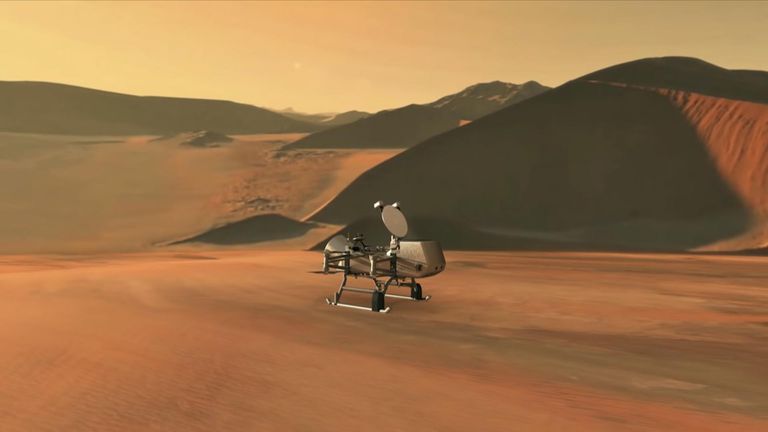NASA is sending a rotorcraft to Saturn's ice moon Titan to continue its search for the "building blocks of life".
The new mission could "revolutionise what we know about life in the universe", the US space agency said.
The Dragonfly has eight rotors and "flies like a large drone".
It will take off on "multiple sorties" and "examine sites around Saturn's icy moon". It is due to launch in 2026 and arrive in 2034.
Titan is considered important because it is thought to be an "analogue to the very early Earth", NASA added. It may therefore give clues about how life arose here.
Advertisement
One of the Dragonfly's tasks will be to look for prebiotic chemical processes common on both Titan and Earth.
There are differences, though. Titan's atmosphere is four times denser than Earth's. And while Titan's atmosphere is nitrogen-based, like that on Earth, it has clouds and rain of methane.
More from Nasa
In its orbit around Saturn, it is about 886 million miles away from the Sun, about 10 times farther than Earth.
That makes its surface temperature very cold, around -290F (-179C)

 Read More – Source [contf] [contfnew]
Read More – Source [contf] [contfnew] 
Sky News
[contfnewc] [contfnewc]







